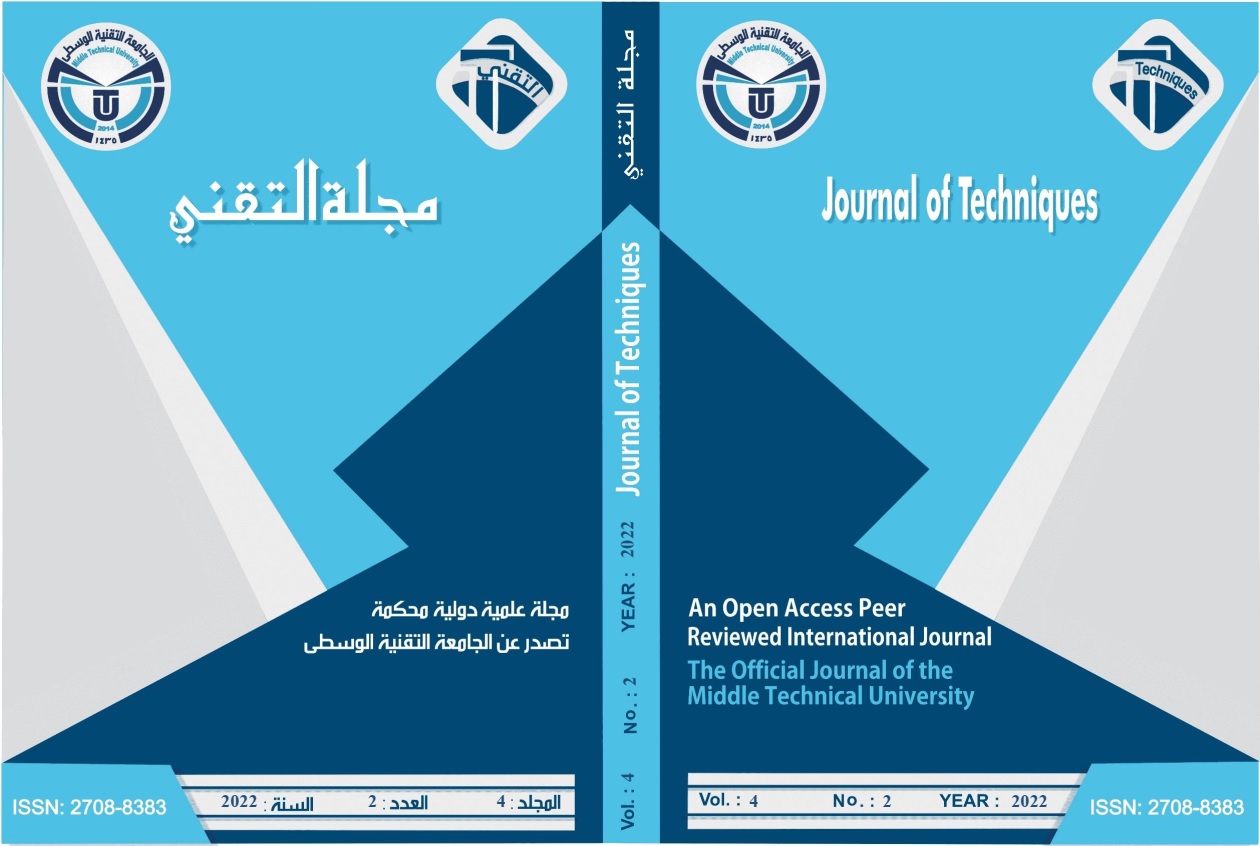Estimate Zinc-Oxide Particles on PMMA Mechanical Properties
DOI:
https://doi.org/10.51173/jt.v4i2.450Keywords:
Zinc Oxide Filler, Impact Strength, Transverse Strength, Mechanical PropertiesAbstract
Background: Poly-methylmethacrylate is the most used dental material for the construction of removable prosthodontic appliances. Unfortunately, it has shown to be lacking two important properties which are radio-opacity and mechanical strength. Zinc-oxide (ZnO) powder is widely used in dentistry and is considered a semiconductor material with the radio-opaque property.
Purpose: To determine the effect of ZnO filler powder on some mechanical properties (impact and transverse strength) of microwave-cured acrylic denture base.
Approach: The ZnO powder was added to the acrylic polymer powder in two percentages of 2% and 4% by weight. The prepared sample of acrylic resin was evaluated with impact and transverse strength (n=10). ANOVA and Tukey test were used at a P-value of (P≤0.05).
Results: Significant reduction in the transverse strength was noticed in the acrylic denture base with the incorporation of ZnO powder as a filler material in both concentrations. However, non-significant differences were observed in the impact strength with the incorporation of the ZnO filler agent.
Conclusions: The addition of ZnO radio-opacifier powder as a filler agent could affect the properties (impact and transverse strength) of microwave-cured acrylic resin.
Downloads
References
T. R. Meng, and M.A. Latta, "Physical properties of four acrylic denture base resins, "J Contemp Dent Pract, vol. 6, No.4, pp. 93-100,2005
J.F. McCabe, and A.W. Walls, Applied dental materials, 9th ed. John Wiley and Sons: 2013
R. Van Noort, Introduction to Dental Materials,4: Introduction to Dental Materials: Elsevier Health Sciences,2009.
D.A. Jagger, Harrison, and K. Jandt, "The reinforcement of dentures, "Journal of Oral Rehabilitation, vol. 26, No.3, pp. 185-194,1999.
P.Chang, "Polymer implant materials with improved X-ray opacity and biocompatibility," Biomaterials, vol. 2,No.3,pp. 151-155,1981.
R.L.Sakaguchi, and J.M. Powers. Craig's Restorative Dental Materials-E-Book. Elsevier Health Sciences.,(2012), Chapter 5,83-107 https://books.google.co.uk/books
P.B.Messersmith, and E.P. Giannelis, "Synthesis and characterization of layered silicate-epoxy nanocomposites," Chemistry of Materials, vol. 6, No.10, pp. 1719-1725,1994.
S.Wacharawichanant, S,Thongyaiet ,A. Phutthaphan.Ch.Elamsam-an., "Effect of particle sizes of zinc oxide on mechanical, thermal and morphological properties of polyoxymethylene/zinc oxide nanocomposites," Polymer Testing, vol.27, No. 8,pp. 971-976,2008.
MA.Jaber, I.M.Hummudi, "Determination of AL2O3, "The 5th International Scientific Conference of Medical and Health Specialties, Dec 2020, pp.418-424.
F.M.Huang, K.W.Tai, M.Yung Chou, YU.Chao Chang, "Cytotoxicity of resin‐, zinc oxide–eugenol‐, and calcium hydroxide‐based root canal sealers on human periodontal ligament cells and permanent V79 cells," International Endodontic Journal, vol. 35. No.2, pp. 153-158,2002.
M.Tanomaru-Filho,E.G.Jorge,J.M.G.Tanomaru,M.Goncalves, "Radiopacity evaluation of new root canal filling materials by the digitalization of images," Journal of Endodontics, vol. 33, No.3, pp. 249-251,2007.
D.A.Wälivaara, P.Abrahamsson,S,Isaksson,L.A.Salata,L.Sennertby, "Periapical tissue response after use of intermediate restorative material, gutta-percha, reinforced zinc oxide cement, and mineral trioxide aggregate as retrograde root-end filling materials: a histologic study in dogs," Journal of oral and maxillofacial surgery, vol. 70, No.9, pp. 2041-2047,2012.
S.T. Khan, M.Ahmed, AAL-Khedairy, J.Musarrat., "Biocidal effect of copper and zinc oxide nanoparticles on human oral microbiome and biofilm formation," Materials Letters, vol. 97,pp. 67-70,2013.
G.L. Patrick, An introduction to medicinal chemistry, 4th ed. Oxford university press 2013, pp.1-171
C.Klingshirn, "ZnO: material, physics and applications," ChemPhysChem, vol. 8, No.6, pp. 782-803,2007.
K.J.Anusavice, C. Shen, and H.R. Rawls, Phillips' science of dental materials. 13th ed. Elsevier Health Sciences:2013.
J.L. Ferracane, Materials in dentistry: principles and applications,2nd ed. Lippincott Williams & Wilkins: 2001,pp1-354.
F.C. Porter, Zinc handbook: properties, processing, and use in design: CRC Press. https://books.google.co.uk/books(1991).
A.H.Battez, R.G.Rodriguez, J.L.Viesca, et al., "CuO, ZrO 2 and ZnO nanoparticles as an antiwear additive in oil lubricants," Wear, vol. 265, No.3, pp. 422-428,2008.
A.Moezzi, A.M. McDonagh, and M.B. Cortie, "Zinc oxide particles: Synthesis, properties, and applications," Chemical Engineering Journal, vol. 185, pp. 1-22,2012.
A.Goyal, and S. Kachhwaha, 'ZnO thin films prepared by spray pyrolysis and electrical characterization," Materials Letters, vol. 68,p p. 354-356,2012.
F.A.P.Silva, T.B.P. Silva, and A.A. Del Bel Cury, "Effect of intrinsic pigmentation on the flexural strength of a microwave-cured acrylic resin," Brazilian dental journal, vol. 13,No.3,pp. 205-207,2002.
J.S.A.John, Gangadhar, and I. Shah, "Flexural strength of heat-polymerized polymethyl methacrylate denture resin reinforced with glass, aramid, or nylon fibers," The Journal of prosthetic dentistry, vol. 86,No.4pp. 424-427,2001.
R.D.Phoenix, M.A.Mansueto, N.A.Ackerman, et al., "Evaluation of mechanical and thermal properties of commonly used denture base resins. Journal of Prosthodontics," vol. 13, No.1, pp. 17-27,2004.
T. Johnson, and D.J. Wood, Techniques in complete denture technology, John Wiley & Sons., (2012), pp1-112, https://books.google.co.uk/books.
A.Abdul-Ameer, "Evaluation of changes in some properties of acrylic denture base material due to addition of radio-opaque fillers. A master thesis, College of Dentistry/University of Baghdad, 2006.
M.A Jaber, "Effect of metal wire and glass fibers on the impact strength of acrylic denture base resin," Iraqi National Journal of Nursing Specialties, vol. 24, No.2, pp. 26-32, 2011.
S.A. Muhsin, and A.I. Haddad, "Effect of Phenol-Formaldehyde Bonding Agent on Acrylic Resin Impact Strength," Journal of Basic and Applied Research, vol. 3, No.3, pp. 127-132,2017.
M. Haque, R.Rahman, N.Islam, et al., "Mechanical properties of polypropylene composites reinforced with chemically treated coir and abaca fiber," Journal of Reinforced Plastics and Composites, vol. 29, No.15,pp. 2253-2261,2010
L.Yang, E.R.Saez, U. Nagel, J.L.Thomason, "Can thermally degraded glass fibre be regenerated for closed-loop recycling of thermosetting composites? Composites Part A:" Applied Science and Manufacturing, vol. 72: pp. 167-174,2015.
C. Uzay, M.H.Boztepe, M.Byramoglu, N.Geren, Effect of post-curing heat treatment on mechanical properties of fiber-reinforced polymer(FRP)composites.MaterialsTesting, 2017,https://doi.org/10.3139/120.111001
R.A.Deblieck,D.J.Vanbeek,M.Mccarthy, P.Midermann, et al., "A simple intrinsic measure for rapid crack propagation in bimodal polyethylene pipe grades validated by elastic-plastic fracture mechanics analysis of data from instrumented Charpy impact test, "Polymer Engineering & Science, vol. 57,No,1pp. 13-21,2017.
P.Chitchumnong, S. Brooks, and G. Stafford, "Comparison of three-and four-point flexural strength testing of denture-base polymers," Dental Materials, vol. 5, No.1, pp. 2-5,1989.
S. Santoso, SPSS 22 from essential to expert skills. Jakarta: PT Elex Media Komputindo, 2014.

Downloads
Published
How to Cite
Issue
Section
License
Copyright (c) 2022 Saja Ali Muhsin, Israa Mohammed Hummudi, Makarem A.R. Al-Ani

This work is licensed under a Creative Commons Attribution 4.0 International License.
















